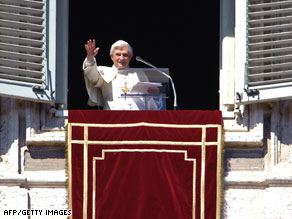Monday, March 23, 2009
That's what Richard Macmanus thinks. Others think along the same lines as him, but then again, some others have completely different ideas. For example, one of the definitions that Macmanus has written down on his blog states that web 2.0 is:
"the underlying philosophy of relinquishing control".
That's a lot of big words for something that is supposed to simplify the web, which is what Web 2.0 is for. The idea behind it was to create a new platform where people could share data in more easily as well as find it. With it came the use of "one-button publishing", something that I am using as I type this post. With a single press of a button, this article will be published into my blog; something that could not have been done before. The reason it could not have been accomplished before was because, with the birth of web 2.0, came the birth of XML text. This replaced the older HTML, otherwise known as "computer language" to some. With HTML, everything that can be done today, could still be done, but it was a lot more complicated. For example, to write this, all I had to do was press ctrl + b, but with HTML, I would have had to type in <> and < / b > at the beginning and end of my sentence respectively.
Basically, Web 2.0 has evolved from Web 1.0, in an attempt to make everything on the platform of the World Wide Web easier to use.
So, when you think about it, Web 2.0 really is about the people, making it easier for us to communicate, to share ideas and to find information; keeping us more connected in a sense. Even making the gap across oceans and continents that little bit smaller, and easier to cross."
-Will
Tuesday, March 17, 2009
Tuesday, March 10, 2009
Pope to skip Holocaust museum on trip to Israel

Pope Benedict XVI, shown at the Vatican during a prayer Sunday, has spoken out forcefully against the Holocaust.
The museum includes controversial wording that reflects a long-running dispute over the role of Pope Pius XII during World War II.
The pope will visit the memorial section of Yad Vashem in Jerusalem, but will not step inside the museum part, the envoy, papal nuncio Antonio Franco, said at a news conference in Jerusalem.
Critics have accused Pope Pius of doing too little to prevent the mass murder of European Jews by the Nazis under Adolf Hitler. A caption in the museum says he maintained a neutral position during the years of mass extermination of Europe's Jews.
The Vatican defends him and is gradually opening its archives in an effort to show that he acted behind the scenes.
The announcement that Benedict will visit only part of Yad Vashem also follows international outrage over his rehabilitation of a rebel bishop who denied the Nazis systematically murdered 6 million Jews in the Holocaust.
The Vatican ordered the bishop, Richard Williamson, to recant, and said the pope was not aware of Williamson's views on the Holocaust when he lifted the excommunication of the bishop.
Benedict, who was born in Germany and forced to join the Hitler Youth as a teenager, has spoken out forcefully against the Holocaust on a number of occasions, including on a visit to the site of the Auschwitz-CNN